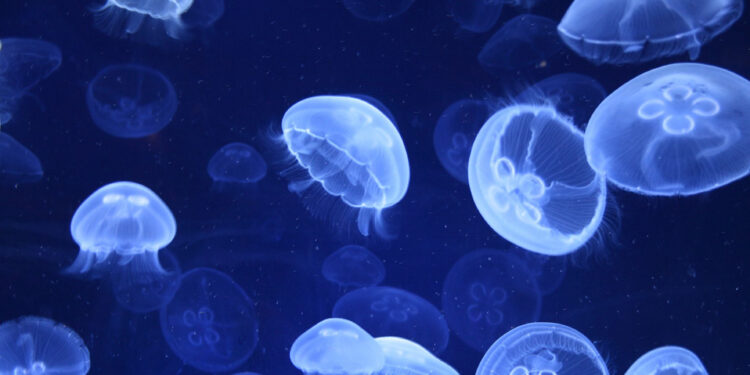Since early June, several Tunisian beaches have been invaded by jellyfish. An early phenomenon, due to warming the Mediterranean and the degradation of the marine ecosystem.
The scene is repeated on many Tunisian beaches: vacationers surprised by benches of jellyfish drifting near the shore. Unusual phenomenon at this time of year, this early proliferation notably affects the coasts of the Sahel, the southern suburbs of Tunis and Cape Bon.
According to the observations of specialists, these jellyfish – especially the blue species, impressive but harmless, and another, smaller, in the painful bite – appeared in the first days of June. However, they usually appear until the end of August or early September.
The Mediterranean warms faster than expected
This change in rhythm is an alarming indicator of the upheavals that the Mediterranean knows. “Our waters are among the hottest in the globe,” explains Yassine Ramzi Sghaier, expert in marine biology. Invited this Friday, June 27, in the show Ahla Sbeh, he alerts: “The rise in temperature accelerates the development of jellyfish. »»
In addition to global warming, marine pollution also plays a crucial role. Certain Tunisian beaches, affected by organic or chemical discharges, offer jellyfish an environment particularly rich in nutrients. Result: their proliferation accelerates.
Overfishing and imbalance of the ecosystem
Another aggravating cause: overfishing. By exploiting certain species of fish that naturally feed on jellyfish, such as turtles or certain tuna, ecological balance is broken.
“It’s a chain: fewer predators, more jellyfish,” summarizes the biologist. And the phenomenon is not about to stop. According to several scientific projections, the Mediterranean could experience more and longer proliferations in the years to come.
Yassine Ramzi said there are several types of jellyfish. Those currently present on Tunisian beaches are available in two main species: a large blue, impressive but harmless, and smaller jellyfish jellyfish, whose bite causes an intense burning sensation on the skin.
A phenomenon that could become the norm
The early appearance of jellyfish on the Tunisian coasts no longer seems to be an exception. In the absence of strong measures to limit global warming and restore marine ecosystems, these episodes could repeat and worsen.
Faced with this reality, scientists and environmentalists call for better surveillance of water, reducing coastal pollution and reasoned management of fishing.
How to protect yourself from jellyfish bites?
In case of bite, it is recommended to avoid rubbing the affected area with sand. Rinse the wound with sea water, then remove the glued filaments from the skin. If the bite causes a toxic or allergic reaction, it is imperative to go immediately to a pharmacy or a health center.








